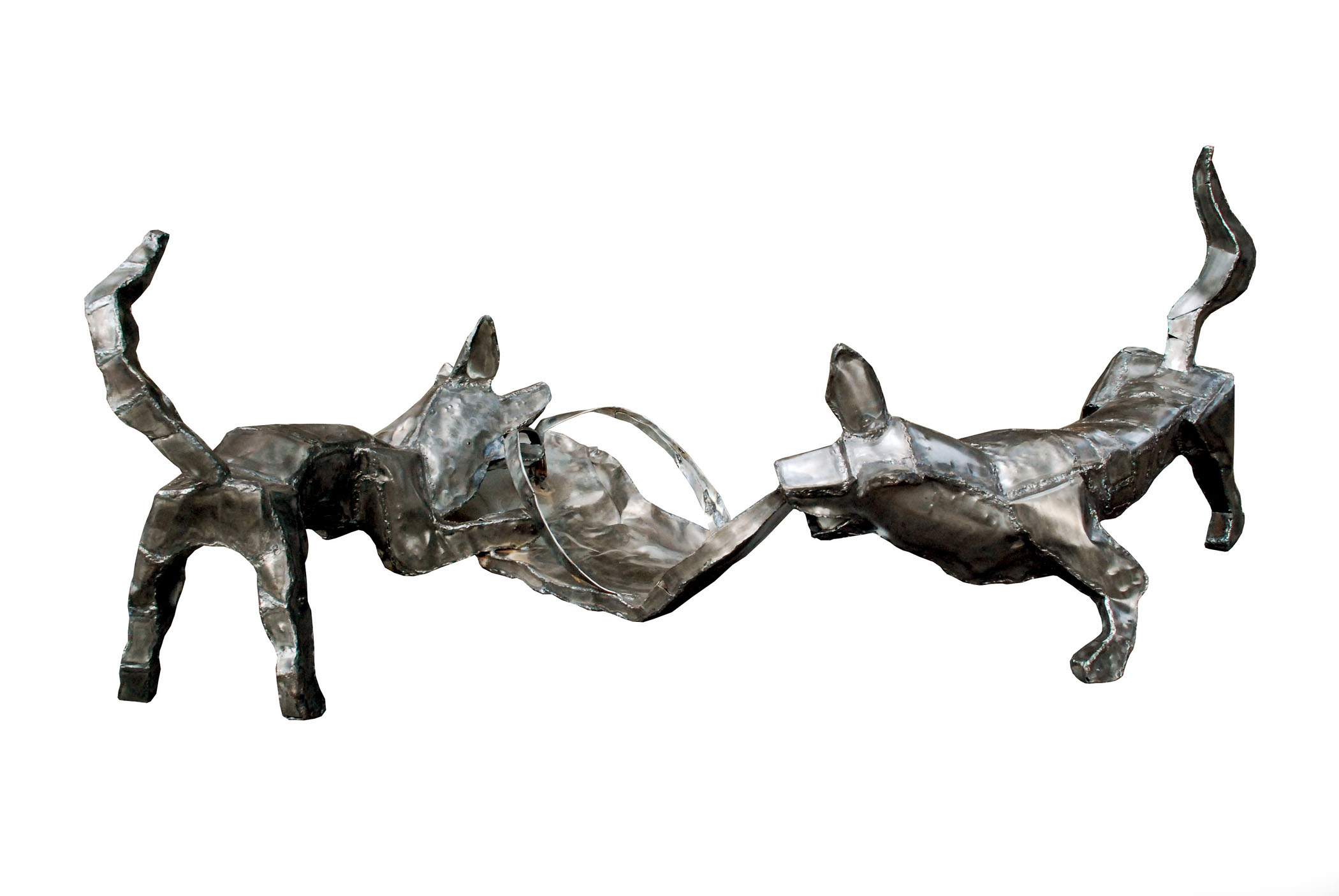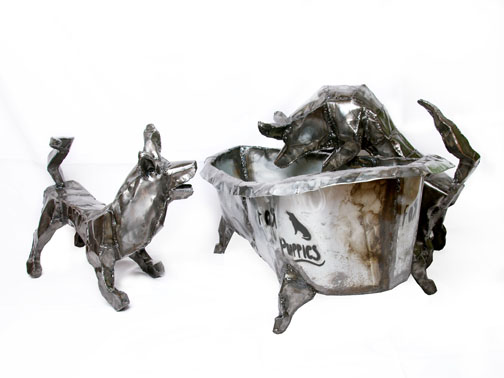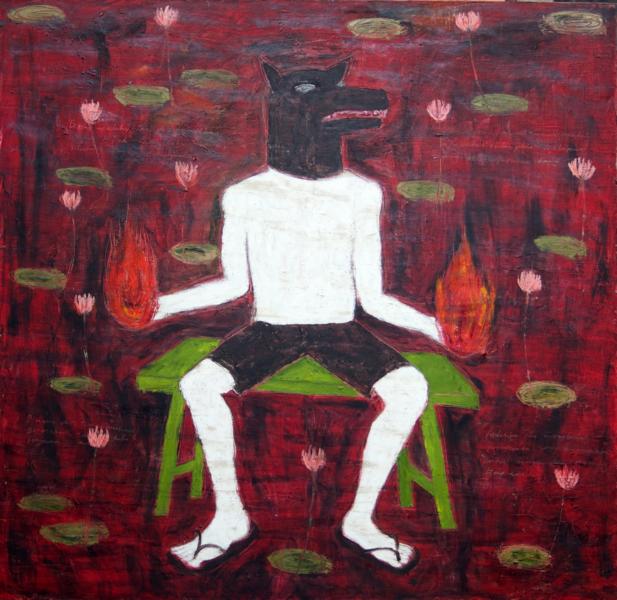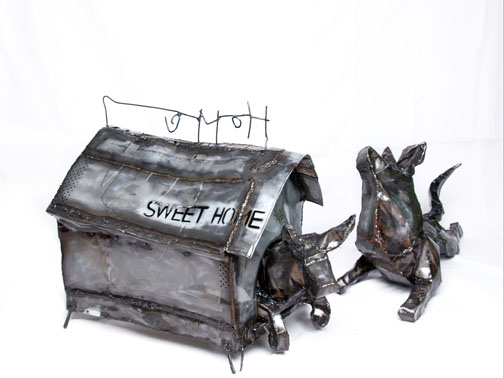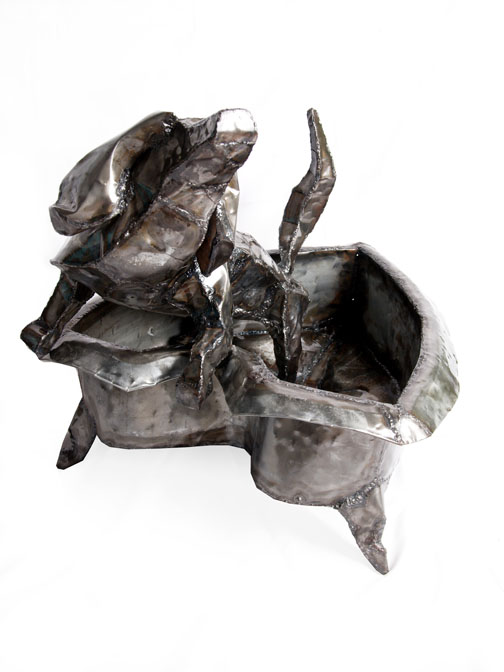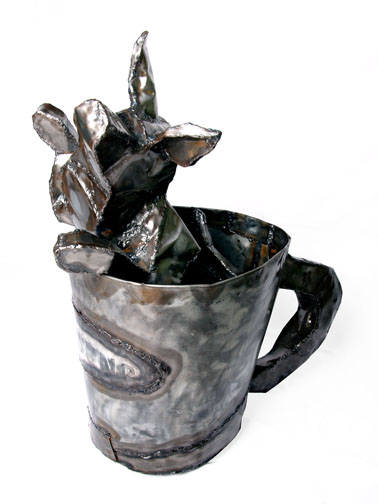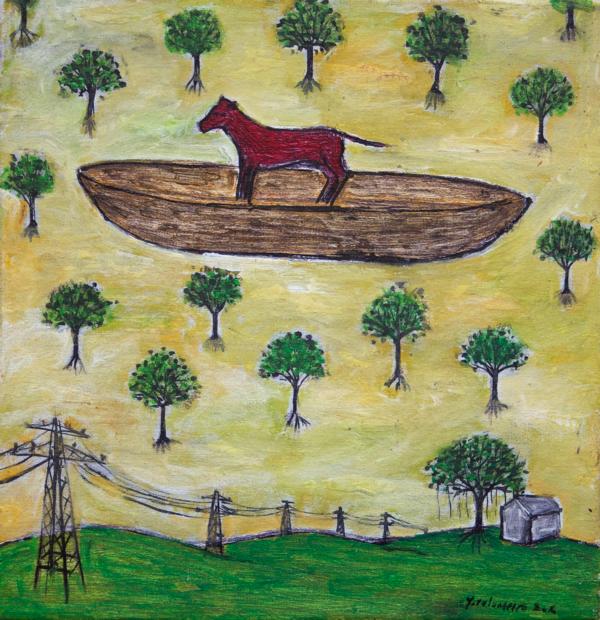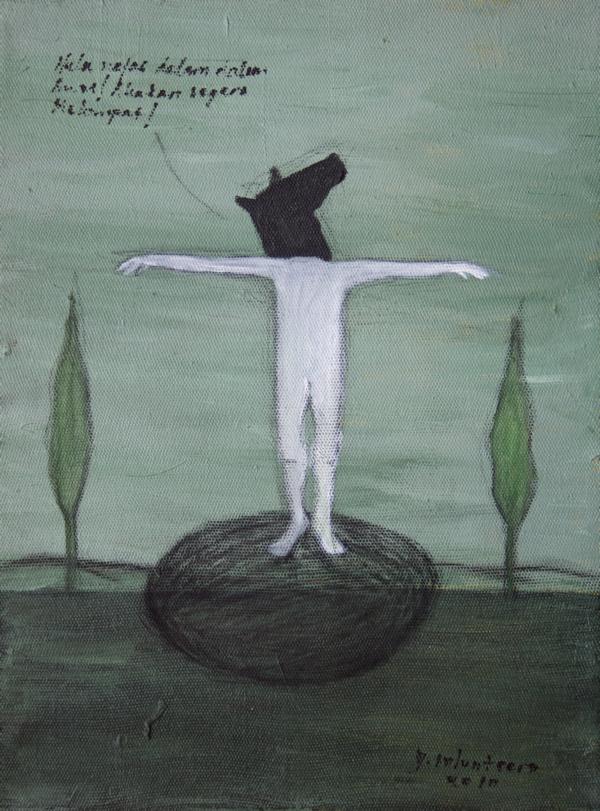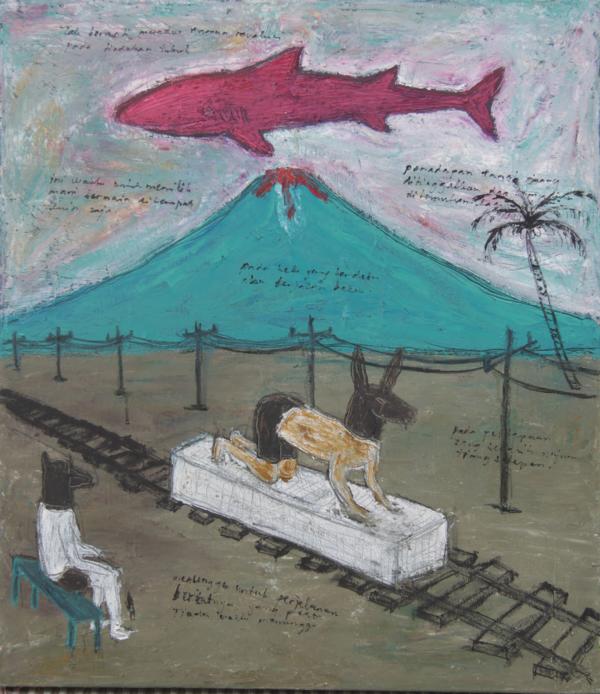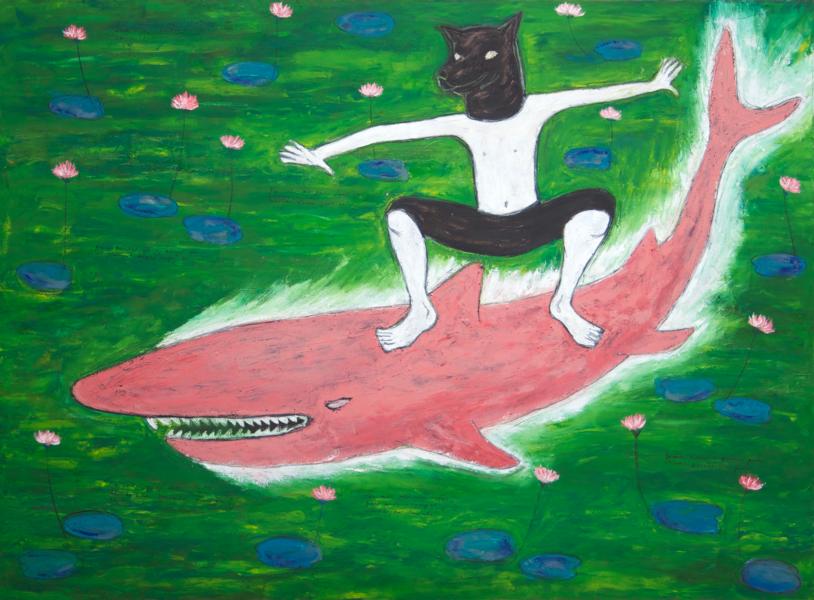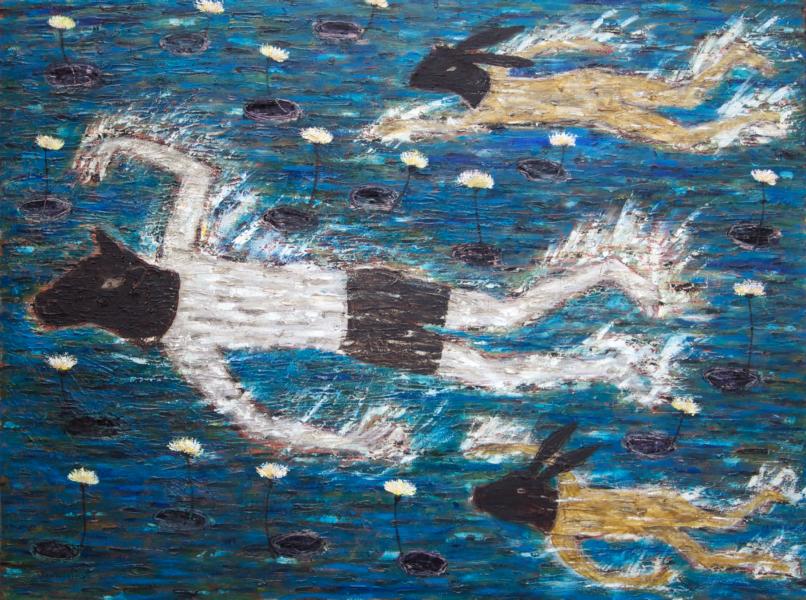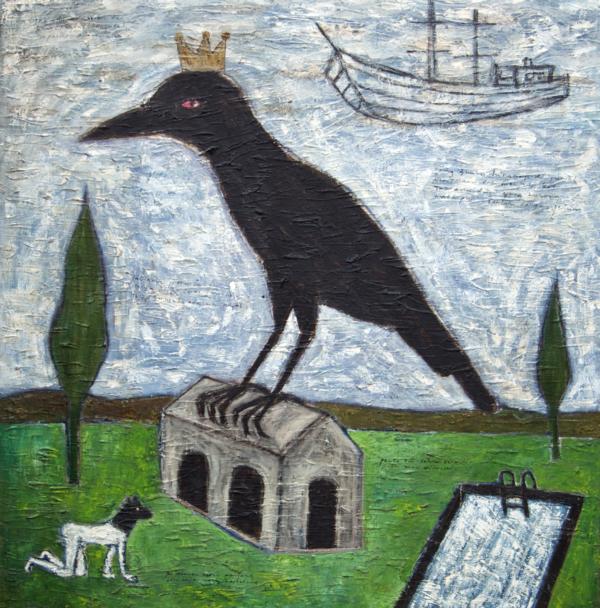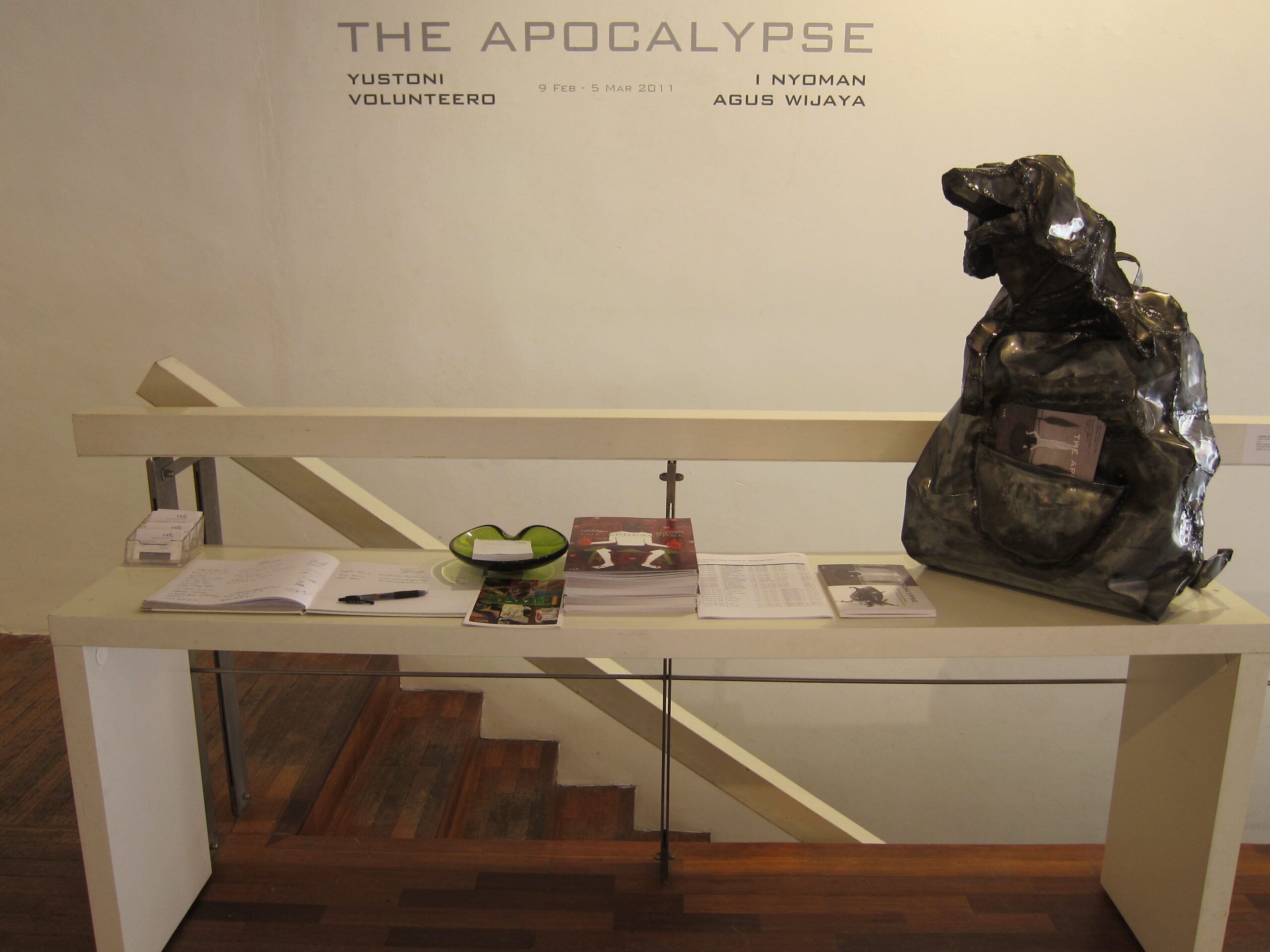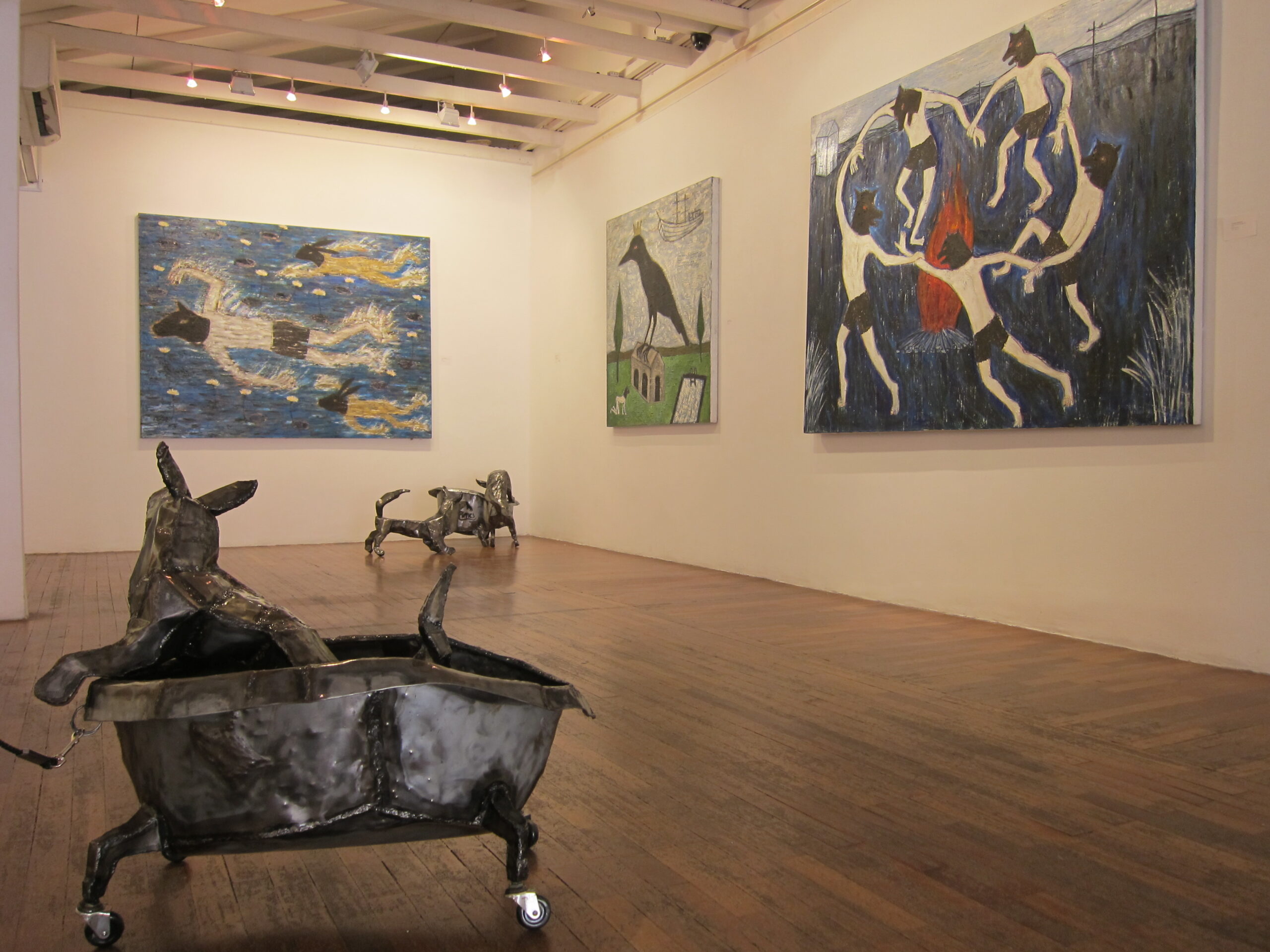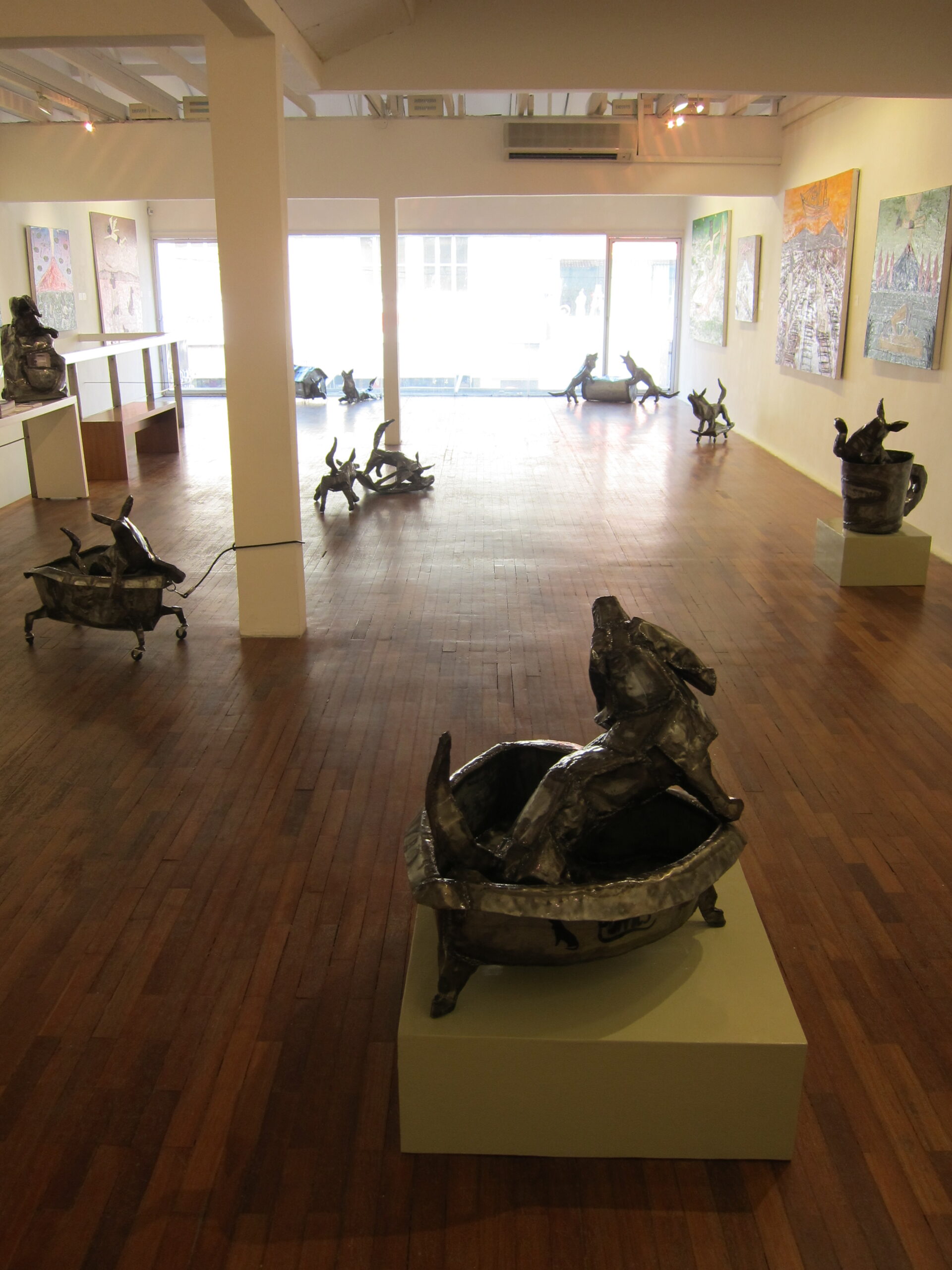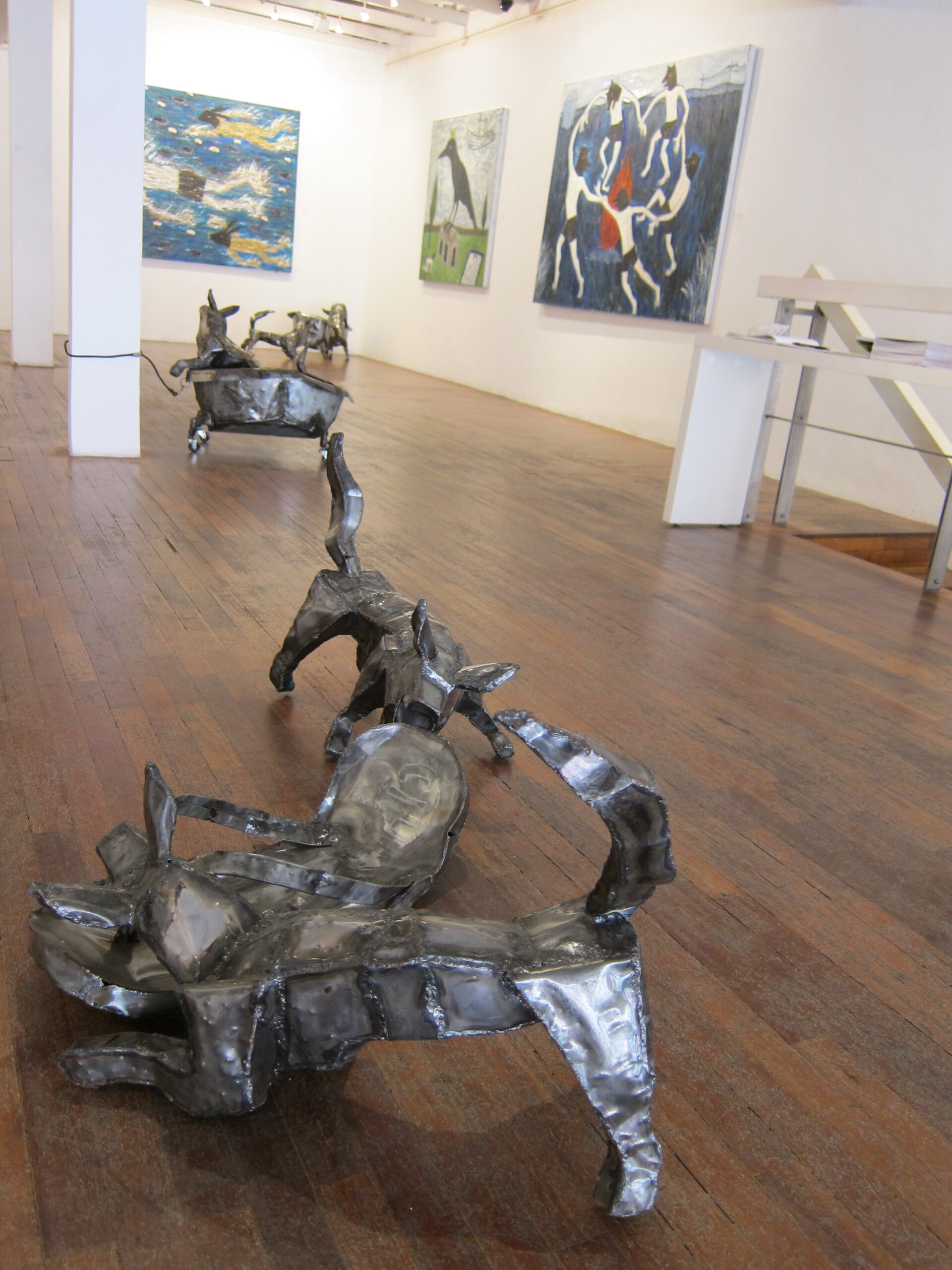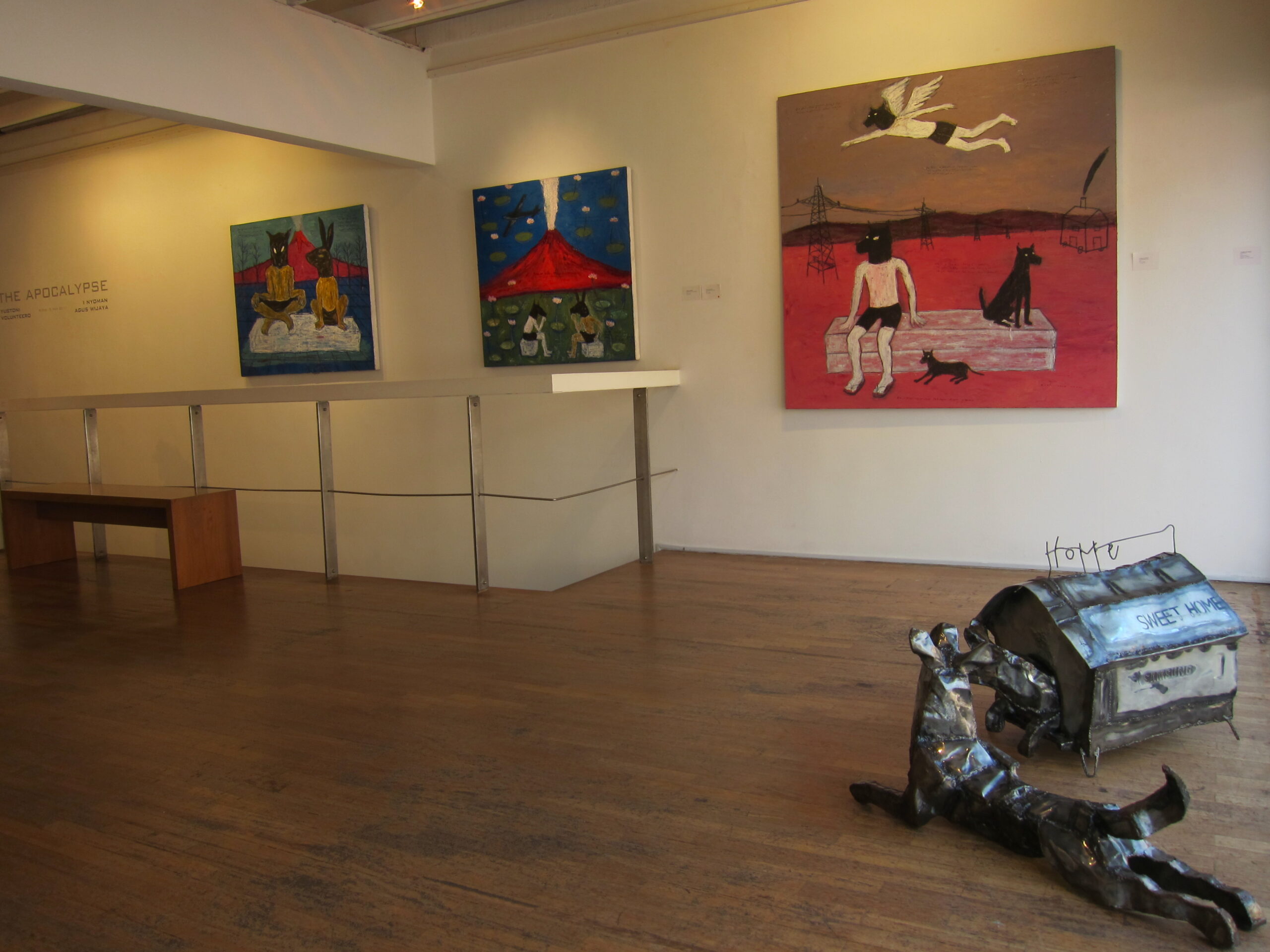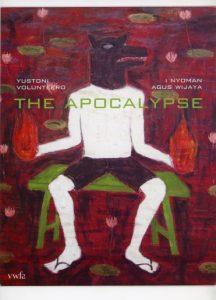Yustoni Volunteero and I Nyoman Agus Wijaya
The Apocalypse
Yustoni Volenteero aka Toni and I Nyoman Agus Wijaya aka Koming presents recent work from a period of personal self-introspection. ‘Apocalypse’ although more commonly associated with the battle of Armageddon or the end of the world actually originates from the Greek meaning “revelation”. In this context it becomes a desirable type of framework for Toni and Koming to present and deconstruct their individual stories. Through their chosen medium of painting and three dimensional objects the artists introduce audiences to their curious narratives by juxtaposing iconographies that relate to animals, landscape and human figures.
The Apocalypse represents a kind of disclosure that deliberately exposes the merging and subsequent transformation between the personal and public spheres. However can these high nuanced revelations steeped in personal languages be successfully communicated to the public? Like many personal and purposefully ambiguous artistic statements, meaning is often conveyed through traces and fragments of articulated and intuitive thoughts. Therefore, The Apocalypse could be interpreted as a series of quotations and visions from a continuing stream of visual consciousness. What results is an exhibition of multiple fragments that make a disjointed but rich and varied whole.
The Apocalypse does not refer to a climactic doomsday. Instead, the title of the exhibition, takes its meaning from the Greek meaning ‘revelation’ which becomes a point of reference for the most recent works by Indonesian artists Yustoni Volunteero aka Toni and I Nyoman Agus Wijaya aka Koming at Valentine Willie Fine Art Kuala Lumpur. Through the language of figuration and allegory both artists utilise animal iconography to reflect upon the human condition through personal and collective memory. Koming creates ambiguous robotic sculptural dogs where as Toni fuses human bodies with animal heads to become curious hybrid creatures that negotiate surreal landscapes and places.
Juxtaposing the work of Toni and Koming creates a rare and unusual moment in the gallery. Their divergent backgrounds express two unique approaches to animal symbology. However, before discussing their works, it is useful to consider their individual backgrounds in order to understand the context of their practice. Toni is the former president of Taring Padi an artist/activist collective who were active during the socio-political context of Yogyakarta in the 1990s. However like many members of the group such as Aris ‘Manyul’ Prabawa, Dodi Irwandi and Mohamad ‘Ucup’ Yusuf, Toni now presents himself as an individual artist. Nevertheless the influence of Taring Padi and his contemporaries see shared similarities that take everyday life as a starting point to reflect upon human concerns. As such, like his friends S.Teddy D, Bob ‘Sick’ Yudhita Agung, Ugo Untoro, Samuel Indratma and Putu Sutawijaya, Toni uses poetic imagery to narrate his dual position as a member of society experiencing the contemporary moment whilst concurrently commenting upon it. His current body of work represents a moment of self-introspection with the hybrid human/dog character representing the artist himself. He explores his personal experiences of family and local landscape such as factories, plants and animals through to the recent eruption of Mount Merapi. These moments of theatre, as described by the artist, create episodic sequences and semiotic narrative fragments that ambiguously unfold across his work.
Koming is a member of Hitam Manis collective made up of I Wayan Agus Novianto, I Nyoman Adiana, Maslihara ‘Panjul’, Robert Kan, and Putu Sutawijaya who together, actively participate in numerous exhibitions and public art projects in Indonesia. Recently they have been exploring the possibilities of metal and zinc plates with various forms and motifs including canine imagery emerging out of such experimentation. Koming’s interests evolve distinctly around the dog itself that represents notions of function, pleasure and domesticity. Seductive metal surfaces, playful forms and curious situations create highly desirable objects that verge on fetish.
The Apocalypse represents a kind of disclosure that deliberately exposes the merging and subsequent transformation between the personal and public spheres. However can these high nuanced revelations steeped in personal languages be successfully communicated to the public? Like many personal and purposefully ambiguous artistic statements, meaning is often conveyed through traces and fragments of articulated and intuitive thoughts. Therefore, The Apocalypse could be interpreted as a series of quotations and visions from a continuing stream of visual consciousness. What results is an exhibition of multiple fragments that make a disjointed but rich and varied whole.
Sudjud Dartanto, Lecturer at Visual Art Faculty, Indonesia Institute of the Arts, Yogyakarta.
